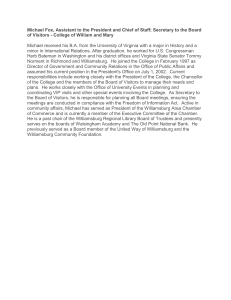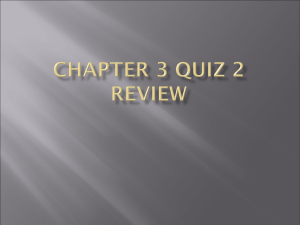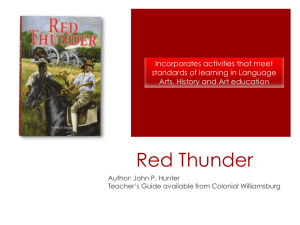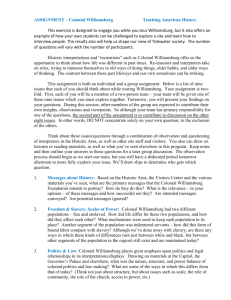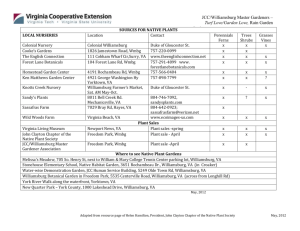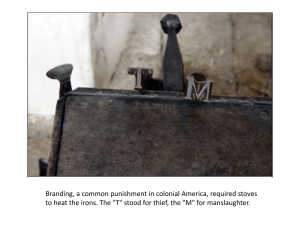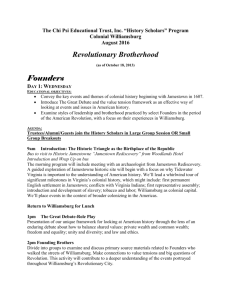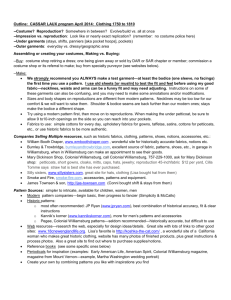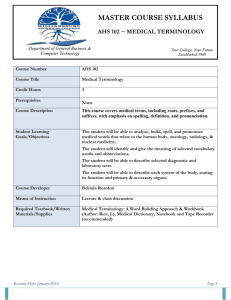Hike our “Historic Triangle” trail
advertisement
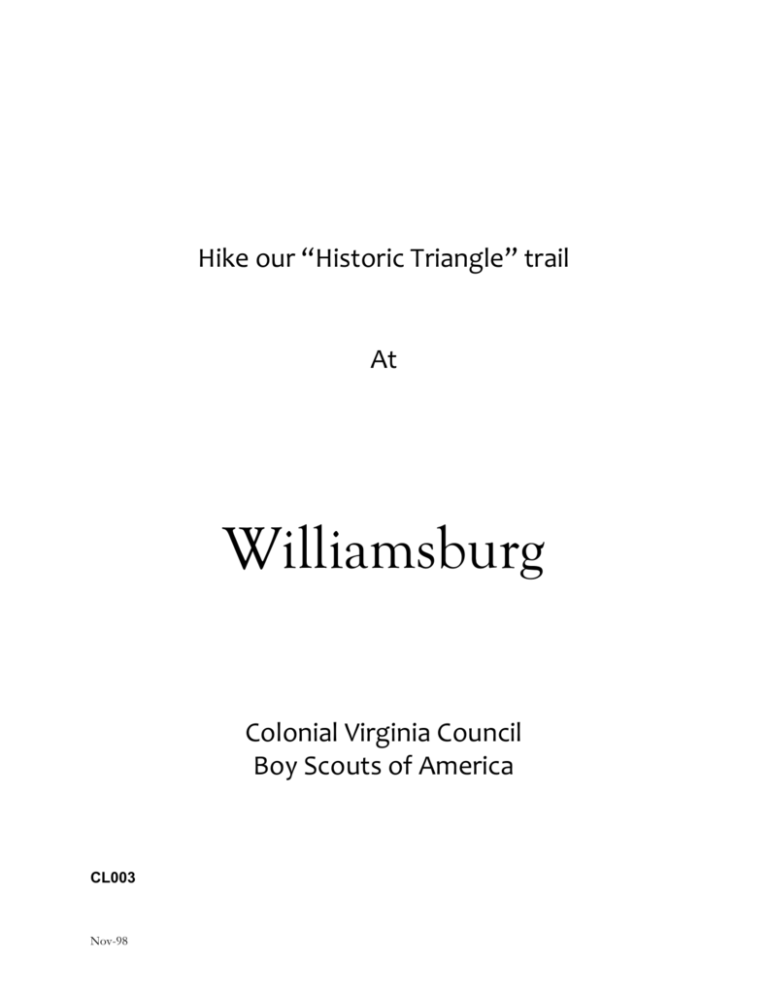
Hike our “Historic Triangle” trail At Williamsburg Colonial Virginia Council Boy Scouts of America CL003 Nov-98 Williamsburg Trail Created By Peter Wrike, Troop Father, Troop 116, Mathews, Va The following pages outline a walking tour of Colonial Williamsburg. The tour has been designed to avoid the expenses and delay which are sometimes encountered in the “official” Colonial Williamsburg Tour. However, you will not be ale to enter many of the historical buildings which you will pass. You may wish to return, at a later date, and take advantage of the opportunities offered by the “official” tour. We feel that this tour is better adopted to Boy Scout troops because: The tour requires no money; The tour is five (5) miles; The tour is logical: It involves women, minorities, dramatic incidents, little known facts, and other information. Tour emphasizes values, education, civic service, craftsmanship, and service. The tour is designed for young boys. It keeps them moving! The tour goes by all drinks, vending areas, water fountains, and restrooms. The tour group can park in “free” areas, such as Merchants Square, College of William and Mary, and other areas. Please have your boys answer the questions found at the end of the Tour Description. You may want to review them now so that you may emphasize points in the tour which will help them understand the answers. Nov-98 2 A WALKING TOUR OF COLONIAL WILLIAMSBURG See map for site locations. Some sites on this tour may not be entered without a tour pass. This walking tour does not require the entry of these buildings. Those buildings offering tours at no charge are so noted. 1. The College of William and Mary – The Wren Building The second oldest college and oldest academic building in continuous use in America. Tour (no charge). 2. The John Blair House and Kitchen The Blair family has a log association with the College of William and Mary (James Blair was the founder and first president). The kitchen is occupied by an employee of Colonial Williamsburg and the formal herb garden is one of the finest in Williamsburg. 3. The Bowden-Armistead House This is a fine example of one of the post-Colonial homes in Williamsburg. It is also one of the few properties in the Historic Area not owned by the Colonial Williamsburg Foundation. 4. Bruton Parish Church This was the second church on this location and one of the principle reasons contributing to the relocation of Virginia’s Capitol from Jamestown. Tour (no charge) 5. George Wythe House This is the home of George Wythe, patriot, first professor of law at an American college, and teacher of Thomas Jefferson and John Marshall. This was the headquarters of General Washington before the siege of Yorktown. Wythe lived to an old age, but was poisoned (with other members of his family) by his nephew in one of the few early known murders in Williamsburg. Nov-98 3 6. The McKenzie Apothecary This is a shop typical of those furnishing medicines and other “health” aids in the eighteenth century. Tour (no charge) 7. The Governor’s Palace This was the residence of seven royal governors and the first two governors of the Commonwealth of Virginia, Patrick Henry and Thomas Jefferson. 8. The Brush-Everhard House This is a very early house which was enlarged and in use through the entire Colonial period. It is typical of the most common residences in Williamsburg during the eighteenth century. 9. Robertson’s Windmill These were very common in Colonial times to grind corn – especially where running or falling water was not available. Nantucket Island has over 15 windmills at one time. In nearby Mathews County, there were tidemills. 10. The Peyton Randoph House This was home of the long-time Speaker of the House of Burgesses and the first President of the Continental Congress. 11. The Courthouse of 1770 This was the law Court for Williamsburg and James City County. The stocks next to the building were used for small crimes. Sometimes persons convicted of being “gossips” had their ears nailed to the post. 12. Josiah Chowning’s Tavern This is a typical tavern of the eighteenth century. It was also the favorite eating place of John D. Rockefeller, Jr., who played a powerful role in providing for the restoration of Colonial Williamsburg. Nov-98 4 13. The Ludwig-Paradise House This was the first building purchased by the Colonial Williamsburg Foundation with Mr. Rockefeller’s help. It has seen many uses, but was originally a fire house. 14. The James Anderson House This was the home of one of the leading craftsmen in Williamsburg and one who played a vital role in providing tools and weapons for the Continental Troops. 15. Brick Kiln and Carpenter’s Yard These are typical areas where everyday needs were often locally provided to the community’s citizens. 16. The Raleigh Tavern This was one of the best known Colonial Taverns where patriots, planters, and other leaders were among its many guests. 17. The King’s Arms Tavern This is a restored tavern which serves meals to guests today. During the Revolution, Baron von Stuben ran up a bill of almost $300 for lodging, meals, and beverages. 18. The Palmer House This is an original house and has in its walls “holes” where scaffolding used to construct the house were left unfilled. This home is occupied by employees of the Colonial Williamsburg Foundation. 19. The Capitol This was one of colonial America’s most important buildings. Principals of selfgovernment, individual liberty, and leadership were developed by Virginians. 20. The Public Gaol (pronounced jail) In this building, debtors, criminals, and pirates were imprisoned. 21. The Coke-Garrett House This was the residence for John Coke, a goldsmith and tavern keeper. It is now used as the official residence for t president of Colonial Williamsburg. Nov-98 5 22. Christiana Campbell’s Tavern This was one of George Washington’s favorite eating places. Many of the taverns were run by women who were usually widows. King’s Arms was run largely by Jane Vobe, and this tavern by Christiana Campbell. 23. Bassett Hall This was the Williamsburg home of the Rockefellers and is still used by their descendants to this day. It is furnished with many of their own personal choices and maintained as Mr. and Mrs. John D. Rockefeller, Jr. knew the home. Behind the house is the old oak tree where, in 1928, Mr. Rockefeller and Dr. Goodwin discussed the establishment of Colonial Williamsburg. 24. The William Finnie House This is a late Colonial building which heralded a new type of architecture. It is rumored, but unproven, that Thomas Jefferson had a role in the design of this house. 25. The Gunsmith This was one of the many shops which provided the everyday tools and needs of the town’s citizens. 26. The Chiswell-Bucktrout House This is now used as a boarding house for guests of the Williamsburg Inn. It has accommodations for ten guest groups inside. 27. The Providence Hall This is a special guest cottage used by the Williamsburg Inn for heads of businesses and state. President Reagan used this in 1983. The house was originally known as the “White House” and dates from 1760 when it was built in New Kent County. 28. The Williamsburg Inn This is the finest Inn of Colonial Williamsburg and is rated as one of the top ten in America. In addition to this and some of the other buildings, Colonial Williamsburg has almost 1100 rooms for guests. Nov-98 6 29. The Lewis House This is an original residence typical of the more ordinary residents of Williamsburg. It is now maintained as a guest building for Williamsburg Inn. In 1983, the French President stayed here as a guest. 30. The Lightfoot House This is one of the finest town homes in Williamsburg and like other buildings is used as a guest house for the Williamsburg Inn. Queen Elizabeth stayed here on a visit. 31. The Custis Kitchen These are the buildings which served as the storehouse for the Royal Troops and Militia. The Magazine is original and, at its busiest time, probably had up to three thousand muskets and accompanying pistols, shot, bayonets, powder, and other equipment for a small army. 32. Hartwell Perry’s Ordinary and Kitchen This tavern and its kitchen are occupied by employees of Colonial Williamsburg. The sign in front is a rebus or word puzzle. It depicts a deer, well, and several pears. “Hart” was another name for a deer and an alcoholic beverage made from pears is called “Perry”, so the sign stands for “Hart Well Perry”. 33. The Custis Kitchen This area, represented only by the original kitchen, was once the home and fine estate of Colonel John Custis. His son, Daniel Parke Custis, was the first husband of Martha Ball. When Daniel died, Martha later married George Washington. George Washington probably used the original house when he was in Williamsburg. He adopted the son of Daniel Custis and Martha, and, at John Parke (Jacky) Custis’ death, George was grief stricken. 34. The First Free Black Baptist Church This is the site of the first free black Baptist Church in America. Nov-98 7 35. The Public Hospital This is a reproduction of the first hospital in America to deal with mental disorders. Behind this building and below ground is the DeWitt Wallace Decorative Arts Gallery which houses thousands of objects form Colonial Williamsburg’s Collection of eighteenth century ceramics, furniture, metals, maps, prints, and textiles. 36. The Travis House The Travis House was moved several blocks to Duke of Gloucester Street to become a Colonial tavern in the 1940’s and 1950’s. Later, after other taverns were restored, it was moved back to here – its original location. Nov-98 8 Camping Information Colonial Virginia Council Scout Reservation Camp Chickahominy Williamsburg, Va Write: Colonial Virginia Council, BSA 11725 Jefferson Avenue Newport News, Va 23606 Call: (757)595-3356 Newport News City Park Route 143 (located between Yorktown and Jamestown) Write: City of Newport News Department of Parks and Recreation 2400 Washington Avenue Newport News, Va 23607 Call: (757)887-5381 (Municipal) Gosnolds Hope Park Write: City of Hampton Gosnolds Hope Park Little Back River Road Hampton, Va 23669 Call: (757)727-6161 (Commercial) Jamestown Beach Campsites (near Jamestown Festival Park) Write: P. O. Box CB Williamsburg, Va 23187 Call: (757)229-7609 (Commercial) Williamsburg Campsite U. S. Route 60 4 ½ miles west of Williamsburg Write: Williamsburg Campsite Rt. 60, R.F.D. #3 Box 274 Williamsburg, Va 23187 Call: (757)564-3101 (Commercial) Other Information Nov-98 Colonial National Historical Park Yorktown Battlefield Ranger Office P.O. Box 210 Yorktown, Virginia 23690 Colonial National Historical Park Jamestown Ranger Office P.O. Box 210 Yorktown, Virginia 23690 Phone: (757)898-3400 Phone: (757) 229-1282 9 Order Form Please place the following order: _____ Pick-up _____ Shipped _____Williamsburg Trail Patches @ $2.25 ea Postage and Shipping $1.50 for every 10 $_______ $_______ There is no Tax Total $_______ Ship To: Name: __________________________________ Address:_________________________________ City: ____________________________________ State: _______ Zip ______ Awards may be picked up at the Council Office Monday through Friday, 8:30 a.m. to 5:00 p.m. at: Colonial Virginia Council Scout Service Center 11725 Jefferson Avenue Newport News, Virginia 23606 Phone: (757)595-3356 Prices of awards are subject to change without prior notice. Nov-98 10 QUESTIONS FOR COLONIAL WILLIAMSBURG TOUR 1. Explain the relationship between James Blair and The College of William and Mary? 2. What were windmills used for in Colonial times? 3. “Gossips” were treated with what unusual punishment in old Williamsburg? 4. What was John D. Rockefeller’s role in the restoration of Williamsburg? 5. Why are there “holes” in the walls of the Palmer House? Nov-98 6. The building called the Magazine, was used for what purpose? 7. What is special about the sign for Hartwell Perry’s Ordinary? 8. Where did George Washington usually stay when he was in Colonial Williamsburg? 9. Name one recent famous person who has stayed in guest homes in Colonial Williamsburg? 10. Name one of the two non-royal governors to reside in the Governor’s Palace? Nov-98 12
